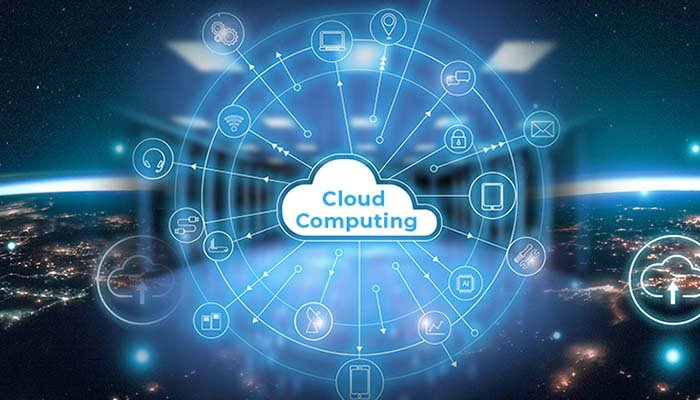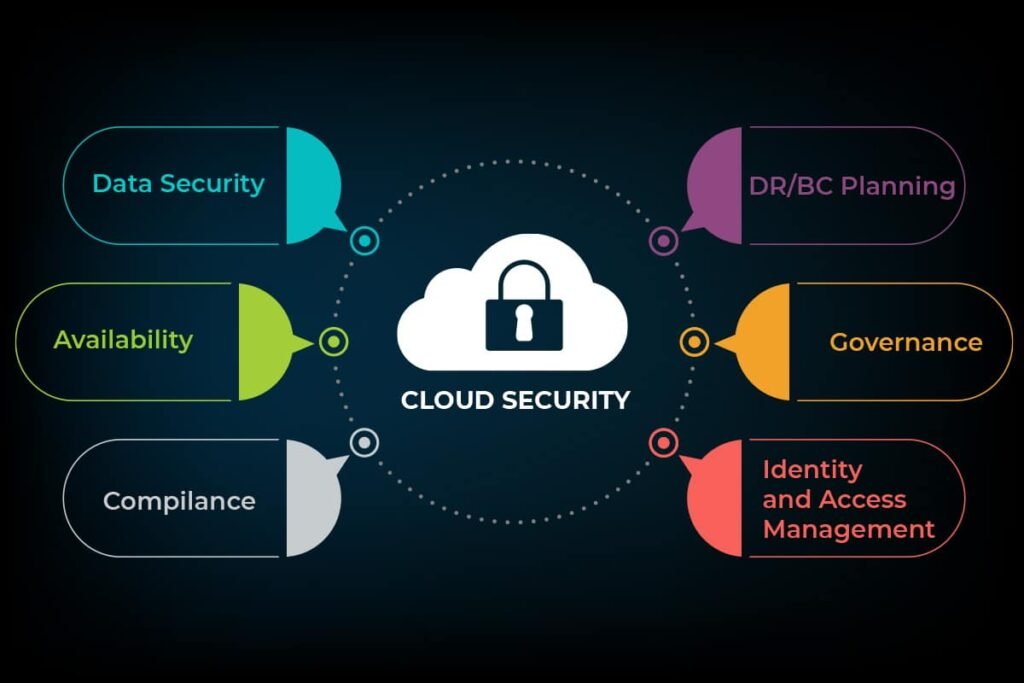
Future Trendz of Cloud Computing: What to Expect in the Coming Years
The future trendz of cloud computing is evolving rapidly, driven by technological advancements and changing business needs. As we look towards the future, several key trends are set to redefine how organizations leverage cloud technologies. This blog post explores these future trends, offering insights into what businesses and consumers can expect in the coming years.
Multi-Cloud Strategy Surge
Interpretation and Boundaries
Multi-cloud strategies involve using multiple cloud services from different providers to meet various business needs. This approach allows organizations to avoid vendor lock-in, optimize performance, and leverage the best services available from each provider.
Market Forecast
The multi-cloud market is anticipated to reach $200 billion by 2026, reflecting a significant shift in how businesses manage their cloud environments (Source: MarketsandMarkets). This growth underscores the increasing adoption of multi-cloud strategies as organizations seek to enhance their flexibility and resilience.
Advantages
- Flexibility: Leveraging a variety of cloud providers allows businesses to customize their cloud solutions for particular needs and workloads, maximizing both performance and cost efficiency.
- Reduced Vendor Lock-In: Multi-cloud strategies prevent dependency on a single cloud provider, reducing risks associated with vendor-specific limitations or issues.
- Optimized Resource Use: Organizations can allocate workloads to the most appropriate cloud environment based on performance, cost, and compliance requirements.
Edge Computing’s Ascendancy
Integration with Cloud Frameworks
Edge computing focuses on processing data near its origin instead of depending on a centralized data center. This strategy works alongside cloud computing by decreasing latency and improving real-time data processing efficiency.
Projected Growth
The edge computing market is expected to grow from $30 billion in 2024 to $105 billion by 2028 (Source: Grand View Research). This substantial increase highlights the rising importance of edge computing in various industries.
Applications
- IoT (Internet of Things): Edge computing enables faster processing of data generated by IoT devices, improving the efficiency and responsiveness of smart systems.
- Real-Time Analytics: By processing data locally, edge computing facilitates real-time analytics and decision-making, crucial for applications such as autonomous vehicles and industrial automation.
- Autonomous Systems: Systems like self-driving cars rely on edge computing for immediate data processing and decision-making, ensuring safe and efficient operations.
AI and ML Integration in Cloud Services
Innovations
Artificial Intelligence (AI) and Machine Learning (ML) are increasingly being integrated into cloud services to automate operations and provide predictive analytics. These technologies enhance cloud capabilities by enabling intelligent decision-making and operational efficiency.
Adoption Stats
By 2025, 40% of enterprises are expected to integrate AI with their cloud platforms (Source: Gartner). This widespread adoption indicates the growing importance of AI and ML in cloud computing.
Use Cases
- Enhanced Security: AI-driven security solutions can detect and respond to threats more effectively than traditional methods, offering advanced protection against cyber-attacks.
- Intelligent Operations: AI and ML algorithms can optimize cloud resource allocation, automate routine tasks, and provide insights for better decision-making.
- Predictive Analytics: Cloud-based ML models can analyze large datasets to predict future trends and outcomes, aiding in strategic planning and risk management.
Enhanced Focus on Cloud Security

Emerging Risks
As future trendz cloud computing becomes more prevalent, so do the associated security risks. Threats such as ransomware attacks and data breaches are becoming increasingly sophisticated, necessitating stronger security measures.
Market Growth
The cloud security market is expected to expand from $60 billion in 2024 to $120 billion by 2028 (Source: Allied Market Research), highlighting the increasing focus on protecting cloud environments from emerging threats.
Key Developments
- Advanced Encryption: Enhanced encryption methods ensure that data stored and transmitted in the cloud remains secure from unauthorized access.
- Zero-Trust Frameworks: Zero-trust security models assume that threats may be present both inside and outside the network, requiring continuous verification of user identities and device statuses.
Serverless Computing Evolution
Core Features
Serverless computing enables developers to create and operate applications without needing to handle the underlying infrastructure. This approach streamlines deployment and scaling, and features a pay-as-you-go pricing model.
Market Trend
The serverless computing market is expected to reach $40 billion by 2026 (Source: Statista). This growth highlights the increasing adoption of serverless architectures due to their cost efficiency and scalability.
Major Players
- AWS Lambda: Amazon’s serverless computing service enables developers to run code in response to events without provisioning or managing servers.
- Azure Functions: Microsoft’s serverless platform allows for event-driven computing, seamlessly integrating with other Azure services.
- Google Cloud Functions: Google’s serverless offering supports lightweight, event-driven functions, ideal for building and extending cloud applications.
Cloud-Native Technologies Growth
Concepts
Cloud-native technologies, including containers and Kubernetes, are designed to leverage cloud environments fully. These technologies facilitate the development, deployment, and scaling of applications in a cloud-centric manner.
Adoption Rate
By 2025, 70% of enterprises are expected to use or explore cloud-native technologies (Source: CNCF). This trend reflects the growing recognition of the benefits of cloud-native approaches.
Benefits
- Rapid Development: Cloud-native technologies enable faster development and deployment cycles, allowing businesses to respond quickly to market changes.
- Scalable Solutions: Containers and orchestration tools like Kubernetes support scalable application architectures, improving resource utilization and performance.
Automation and DevOps Integration
Role of Automation
Automation plays a crucial role in cloud management by streamlining processes and reducing manual intervention. DevOps practices, which emphasize collaboration between development and operations teams, are increasingly integrated with automation tools.
Market Insights
The cloud automation market is projected to grow to $14 billion by 2027 (Source: MarketsandMarkets). This growth highlights the increasing reliance on automation to enhance cloud operations.
Advantages
- Increased Efficiency: Automation streamlines routine tasks, cutting down on time and effort while enhancing overall operational efficiency.
- Reduced Errors: Automated processes minimize the risk of human error, leading to more reliable and consistent cloud operations.
Hybrid Cloud Expansion
Explanation and Benefits
Hybrid cloud solutions integrate on-premises infrastructure with public and private cloud services, providing both flexibility and scalability while ensuring control over essential data and applications.
Adoption Forecast
By 2024, 58% of organizations are expect to adopt hybrid cloud strategies (Source: IDC). This trend indicates a growing preference for hybrid models that balance cloud benefits with on-premises control.
Practical Uses
- Disaster Recovery: Hybrid cloud solutions provide robust disaster recovery options by enabling data replication and backup across multiple environments.
- Compliance: Organizations can meet regulatory and compliance requirements by keeping sensitive data on-premises while leveraging cloud resources for other needs.
Quantum Computing’s Future Impact
Potential for Cloud Enhancement
Quantum computing promises to revolutionize cloud services by offering unprecedented computational power. This technology has the potential to solve complex problems that are beyond the capabilities of classical computers.
Market Projection
The quantum computing market is project to hit $2 billion by 2027 (Source: Research and Markets), underscoring the increasing investment and advancements in quantum technologies.
Notable Progress
- Google’s Quantum Breakthroughs: Google has achieved quantum supremacy, demonstrating that quantum computers can solve specific problems faster than classical computers.
- IBM’s Quantum Hummingbird: IBM’s Quantum Hummingbird aims to advance quantum computing capabilities, bringing us closer to practical quantum applications.
Sustainable Cloud Practices
Importance
With rising environmental concerns, there is a growing emphasis on lowering the carbon footprint of cloud computing. Sustainable practices are design to lessen the environmental impact of cloud operations.
Market Growth
Green cloud services are expect to grow to $80 billion by 2025 (Source: MarketsandMarkets). This growth reflects the rising demand for environmentally responsible cloud solutions.
Key Initiatives
- Energy-Efficient Data Centers: Enhancements in data center design and operation aim to reduce energy consumption and improve overall efficiency.
- Renewable Energy Usage: Cloud providers are increasingly sourcing energy from renewable sources to power their data centers and operations.
Conclusion
The future trendz of cloud computing is poise to be shape by a range of transformative trends. From the rise of multi-cloud and edge computing to advancements in AI, quantum computing, and sustainability, these developments will have a profound impact on how businesses and individuals use cloud technologies. Staying informed about these trends will be crucial for leveraging cloud computing’s full potential and addressing emerging challenges.







